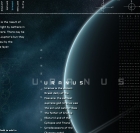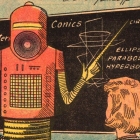-
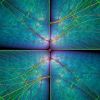 +26 +1
+26 +1Rethinking reality: Is the entire universe a single quantum object?
In the face of new evidence, physicists are starting to view the cosmos not as made up of disparate layers, but as a quantum whole linked by entanglement
-
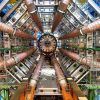 +36 +1
+36 +1Particle accelerator on a chip
Particle accelerators are crucial tools in a wide variety of areas in industry, research and the medical sector. The space these machines require ranges from a few square meters to large research centers. Using lasers to accelerate electrons within a photonic nanostructure constitutes a microscopic alternative with the potential of generating significantly lower costs and making devices considerably less bulky. Until now, no substantial energy gains were demonstrated. In other words, it has not been shown that electrons really have increased in speed significantly. Two teams of laser physicists have just succeeded in demonstrating a...
-
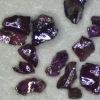 +38 +1
+38 +1LK-99 isn’t a superconductor — how science sleuths solved the mystery
Replications pieced together the puzzle of why the material displayed superconducting-like behaviours.
-
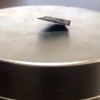 +35 +1
+35 +1Viral room-temperature superconductor claims spark excitement – and skepticism
Room-temperature superconductors could transform technology – but the latest, much-hyped claims should be approached with caution.
-
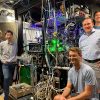 +13 +1
+13 +1MIT physicists generate the first snapshots of fermion pairs
When your laptop or smartphone heats up, it’s due to energy that’s lost in translation. The same goes for power lines that transmit electricity between cities. In fact, around 10 percent of the generated energy is lost in the transmission of electricity. That’s because the electrons that carry electric charge do so as free agents, bumping and grazing against other electrons as they move collectively through power cords and transmission lines. All this jostling generates friction, and, ultimately, heat.
-
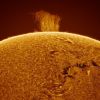 +13 +1
+13 +1The sun's activity could peak 2 years early, frying satellites and causing radio blackouts by the end of this year, experts say
The sun has had an unusually large number of sunspots this year forcing scientists to revisit their predictions of when the solar maximum will hit.
-
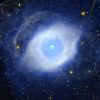 +28 +1
+28 +1The expansion of the universe could be a mirage, new theoretical study suggests
The expansion of the universe could be a mirage, a potentially controversial new study suggests. This rethinking of the cosmos also suggests solutions for the puzzles of dark energy and dark matter, which scientists believe account for around 95% of the universe's total energy and matter but remain shrouded in mystery.
-
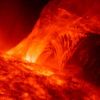 +20 +1
+20 +1Sun Storm May Have Sparked Life on Earth: A Look into Solar Activity
Sun Storms and Life’s Origins: A new study proposes that early building blocks of life on Earth could have resulted from solar eruptions. Amino acids and carboxylic acids, the building blocks of proteins and organic life, can be formed when solar particles collide with gases in the early Earth’s atmosphere, as demonstrated by a series of chemical studies. The research results were printed in the journal Life.
-
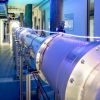 +17 +1
+17 +1Qubits 30 meters apart used to confirm Einstein was wrong about quantum
A new experiment uses superconducting qubits to demonstrate that quantum mechanics violates what's called local realism by allowing two objects to behave as a single quantum system no matter how large the separation between them. The experiment wasn't the first to show that local realism isn't how the Universe works—it's not even the first to do so with qubits.
-
 +26 +1
+26 +1Weird particle that remembers its past discovered by quantum computer
Particles with unusual properties called anyons have long been sought after as a potential building block for advanced quantum computers, and now researchers have found one – using a quantum computer
-
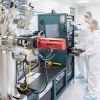 +22 +1
+22 +1‘We have made science fiction come true!’ Scientists prove particles in a quantum system can be rejuvenated
An Austrian and Spanish team demonstrated that a process can be ‘rewound’ to restore the components of an atom to their previous state.
-
 +21 +1
+21 +1Room-Temperature Superconductor Discovery Meets With Resistance
A paper in Nature reports the discovery of a superconductor that operates at room temperatures and near-room pressures. The claim has divided the research community.
-
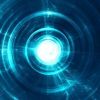 +15 +1
+15 +1For the first time ever, physicists see particles form through quantum tunneling: ScienceAlert
Chemistry takes effort. Whether by raising the temperature, increasing the odds of matching atoms colliding in a hot collision, or increasing the pressure and squeezing them together, building molecules usually requires a certain cost in energy.
-
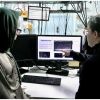 +15 +1
+15 +1Quantum breakthrough could revolutionise computing
Researchers have transferred 'quantum' information between computer chips at record speeds and accuracy.
-
 +4 +1
+4 +1'Negative mass' created at Washington State University
Washington State University physicists have created a fluid with negative mass, which is exactly what it sounds like. Push it, and unlike every physical object in the world we know, it doesn’t accelerate in the direction it was pushed. It accelerates backwards. The phenomenon is rarely created in laboratory conditions and can be used to explore some of the more challenging concepts of the cosmos, said Michael Forbes, a WSU assistant professor of physics and astronomy and an affiliate assistant professor at the University of Washington.
-
 +12 +1
+12 +1Holes in sun's atmosphere can help predict space weather on Earth
Coronal holes are cooler, darker regions in the sun's upper atmosphere, the corona, from which solar wind streams into space at high speed. A new study has now found that the magnetic properties of these holes can be used to forecast the severity of geomagnetic storms that hit Earth.
-
 +16 +1
+16 +1How Physicists Proved The Universe Isn't Locally Real - Nobel Prize in Physics 2022 EXPLAINED
-
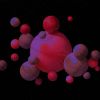 +15 +1
+15 +1Why More Physicists Are Starting to Think Space and Time Are ‘Illusions’
A concept called “quantum entanglement” suggests the fabric of the universe is more interconnected than we think. And it also suggests we have the wrong idea about reality.
-
 +15 +1
+15 +1The Theory of Everything: Searching for the universal rules of physics
The Theory of Everything is an overarching hypothetical framework that would explain the physics of the entire universe in a single equation. But unifying theories that define the large-scale cosmological structure of the universe with those that describe the minuscule quantum world of the subatomic particles has been a challenge for over a century.
-
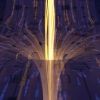 +17 +1
+17 +1Scientists simulate ‘baby’ wormhole without rupturing space and time
It’s a mainstay of science fiction, it’s tiny and it doesn’t exist in physical space, but researchers say they’ve created what is, theoretically, a worm hole. Researchers have announced that they simulated two miniscule black holes in a quantum computer and transmitted a message between them through what amounted to a tunnel in space-time.
Submit a link
Start a discussion
